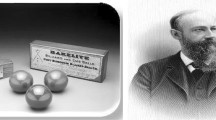Abstract
The migration from the concept of waste streams to untapped side streams has meant that by-products from industrial processes are being investigated as sustainable resources. As a side stream containing cellulosic fibre, the influence of integrating farm dairy effluent (FDE) in polylactic acid (PLA) was investigated and compared with wood sander dust (SD). The mechanical and thermal properties of injection moulded specimens were evaluated as a function of filler type. The investigation indicated that FDE had similar density to SD but a lower stiffness attributed to the presence of proteins and the lesser amount of cellulose. The Young’s moduli of the FDE composites were higher than the neat PLA, however, the tensile strength generally decreased but remained comparable to those filled with SD. Thermo-mechanical analysis indicated an improvement in the storage modulus of all composites containing 40 wt% of either filler above the glass transition temperature of PLA. Tensile testing of specimens that were exposed to accelerated weathering indicated a faster decrease in properties for the FDE composites compared to those filled with SD. The FDE composites degraded at least twice as fast as neat PLA and SD composites, which was tentatively attributed to the acids (e.g. fatty and amino-acids) contained in FDE and not present in SD. These findings revealed that using extrusion and injection moulding processes, FDE has potential as a composite filler from an improved stiffness and UV accelerated degradation perspectives.








Similar content being viewed by others
References
Houlbrooke DJ, Horne DJ, Hedley MJ, Hanly JA, Snow VO (2004) NZ J Agric Res 47:499–511
Irshad M, Eneji AE, Hussain Z, Ashraf M (2013) J Soil Sci Plant Nutr 13:115–121
Longhurst RD, Roberts AHC, O’Connor MB (2000) NZ J Agric Res 43:7–14
Hong CK, Wool RP (2004) J Appl Polym Sci 95:1524–1538
Ghanbarzadeh B, Oromiehi AR (2008) Int J Biol Macromol 43:209–215
Ayrilmis N, Kaymakci A (2013) Ind Crop Prod 43:457–464
Berthet M-A, Angellier-Coussy H, Machado D, Hilliou L, Staebler A, Vicente A, Gontard N (2015) Ind Crop Prod 69:110–122
Yan L, Chouw N, Jayaraman K (2014) Compos Part B Eng 56:296–317
Holt GA, Chow P, Wanjura JD, Pelletier MG, Wedegaertner TC (2014) Ind Crop Prod 52:627–632
Nagarajan V, Mohanty AK, Misra M (2013) ACS Sustain Chem Eng 1:325–333
Nyambo C, Mohanty AK, Misra M (2010) Biomacromol 11:1654–1660
Fortunati E, Aluigi A, Armentano I, Morena F, Emiliani C, Martino S, Santulli C, Torre L, Kenny JM, Puglia D (2015) Mater Sci Eng 47:394–406
Way C, Wu DY, Cram D, Dean K, Palombo E (2014) J Polym Environ 21:54–70
Boronat T, Fombuena V, Garcia-Sanoguera D, Sanchez-Nacher L, Balart R (2015) Mater Des 68:177–185
Fakhrul T, Islam MA (2013) Proc Eng 56:795–800
Sedlařík V, Saha N, Kuřitka I, Sáha PJ (2007) Appl Polym Sci 106:1869–1879
Tisserat B, Finkenstadt VL (2011) J Polym Environ 19:766–775
Xie L, Xu H, Wang Z-P, Li X-J, Chen J-B, Zhang Z-J, Yin H-M, Zhong G-J, Lei J, Li Z-M (2014) J Polym Res 21:1–15
Karamanlioglu M, Robson GD (2013) Polym Degrad Stab 98:2063–2071
Kumar R, Yakubu MK, Anandjiwala RD (2010) Express Polym Lett 4:423–430
Newman RH, Hemmingson JA, Suckling ID (1993) Holzforschung 47:234–238
German RM, Park SJ (2009) Handbook of mathematical relations in particulate materials processing. Wiley, New York
Müssig J (2010) Industrial applications of natural fibres: structure, properties and technical applications. Wiley, New York
Liao W, Liu Y, Liu C, Chen S (2004) Bioresour Technol 94:33–41
Page LH, Ni J-Q, Heber AJ, Mosier NS, Liu X, Joo H-S, Ndegwa PM, Harrison JH (2014) Biosyst Eng 118:16–28
Calderón FJ, McCarty GW, Reeves JB III (2006) J Anal Appl Pyrol 76:14–23
Le Guen M-J, Newman RH, Fernyhough A, Hill SJ, Staiger MP (2016) In: Fangueiro R, Rana S (eds) Natural fibres advances in science and technology towards industrial applications: from science to market. Springer, Dordrecht, pp 35–47
Barth A, Zscherp C (2002) Q Rev Biophys 35:369–430
Ramesh Babu B, Maruthamuthu S, Rajasekar A, Muthukumar N, Palaniswamy N (2006) Int J Environ Sci Technol 3:159–166
Al-Oweini R, El-Rassy H (2009) J Mol Struct 919:140–145
Islam MS, Pickering KL, Foreman NJ (2010) Polym Degrad Stab 95:59–65
Spiridon I, Leluk K, Resmerita AN, Darie RN (2015) Compos Part B Eng 69:342–349
Newman RH, Thumm A, Clauss EC, Le Guen M-J (2007) Adv Mater Res 29–30:287–290
Acknowledgments
The authors thank the Ministry of Business, Innovation, and Employment funding under High Value Manufacturing and Services (HVMS) Enabling Technologies investment contract, Mr. Don Barbour for providing materials, Dr. Martin Markotsis, Mr. Gildas Lebrun and Mr. Ross Anderson for technical assistance and Mr. James Bridson for his advice in FTIR spectroscopy.
Author information
Authors and Affiliations
Corresponding author
Rights and permissions
About this article
Cite this article
Le Guen, MJ., Thoury-Monbrun, V., Castellano Roldán, J.M. et al. Assessing the Potential of Farm Dairy Effluent as a Filler in Novel PLA Biocomposites. J Polym Environ 25, 419–426 (2017). https://doi.org/10.1007/s10924-016-0824-1
Published:
Issue Date:
DOI: https://doi.org/10.1007/s10924-016-0824-1




